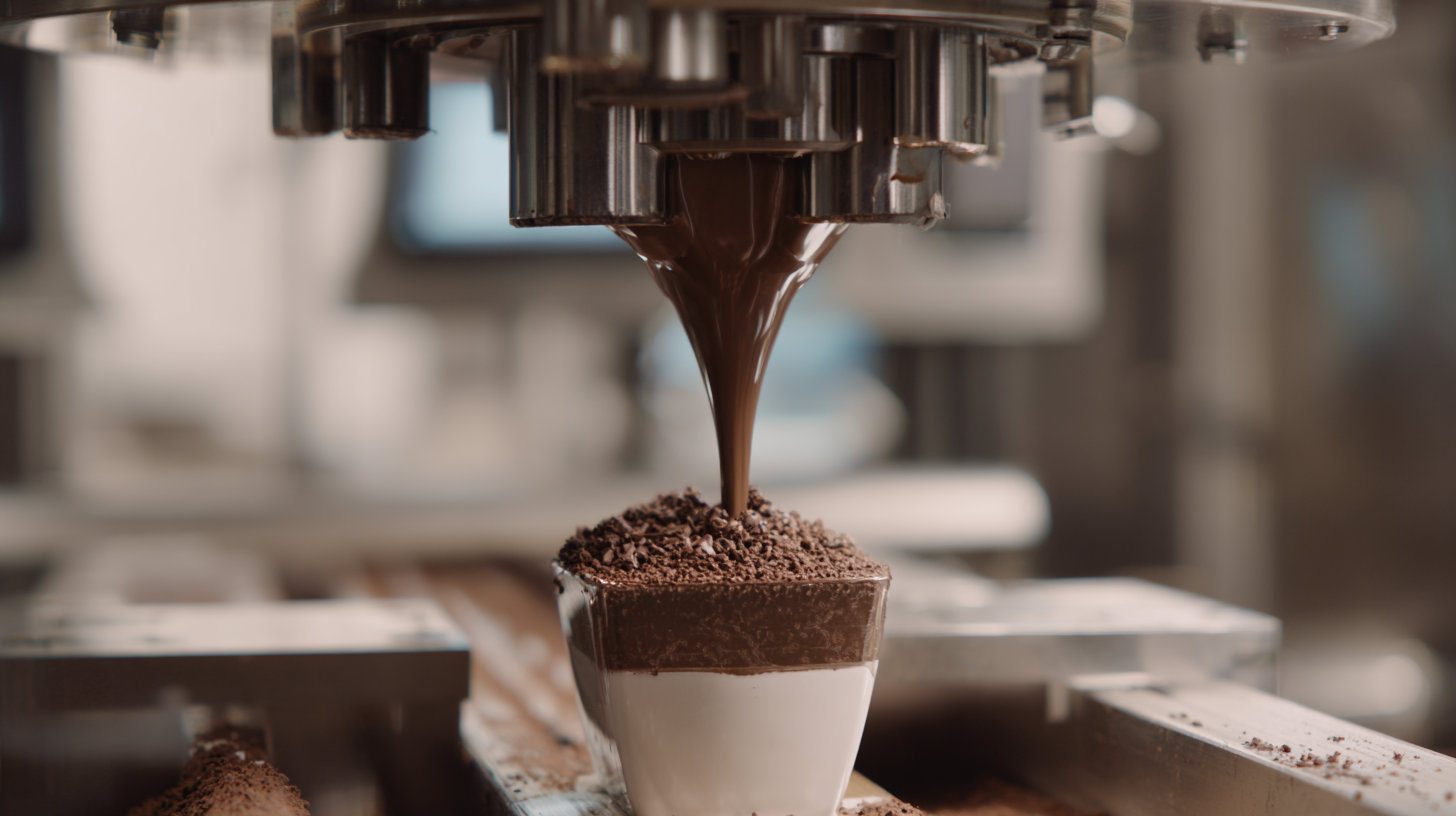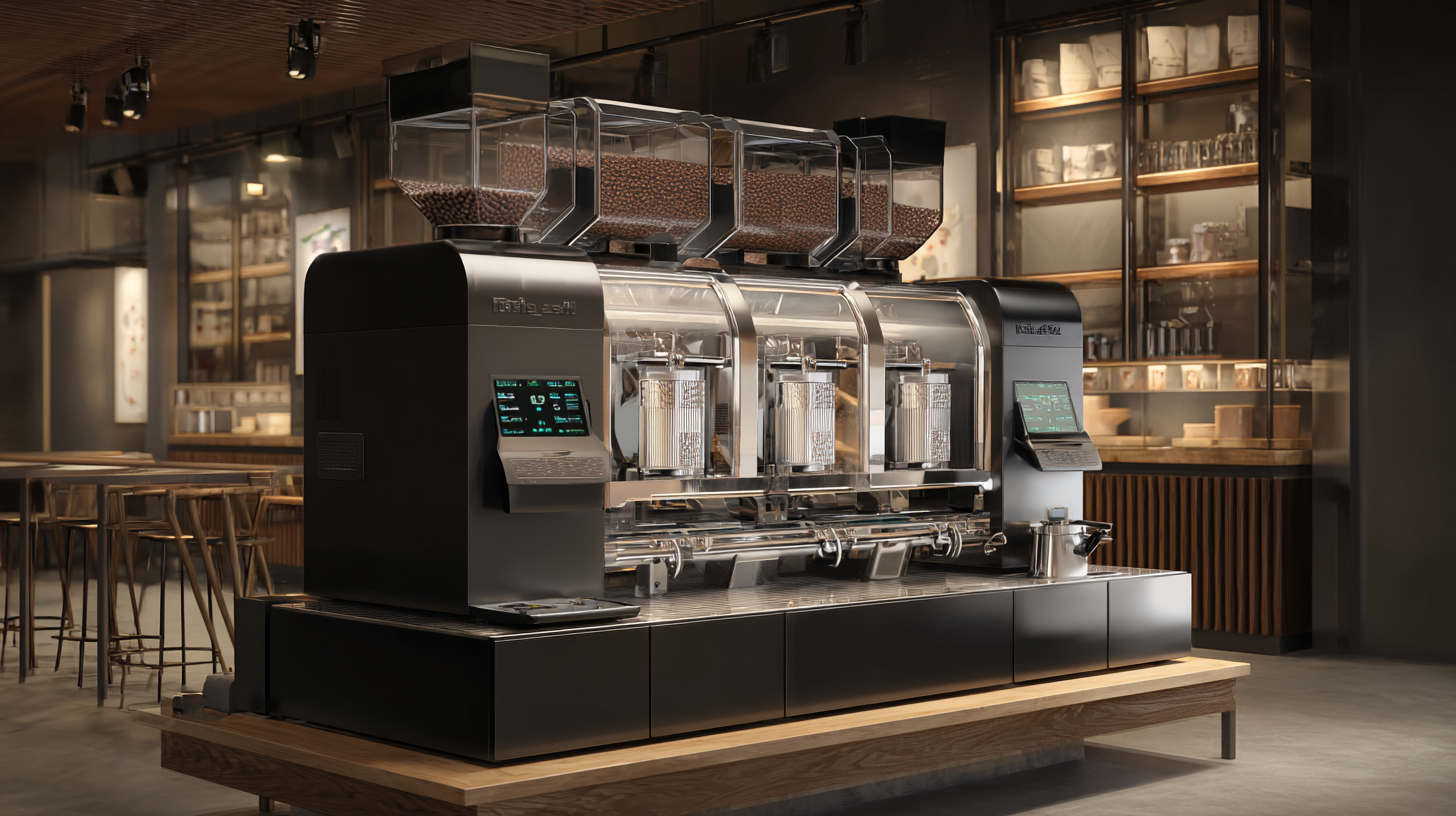As we look toward 2025, the cacao industry is poised for significant transformation, driven by advancements in technology and changing consumer preferences. Recent reports indicate that the global cacao market is projected to reach $14.3 billion by 2025, with a notable increase in demand for high-quality cacao products. This surge is prompting manufacturers to innovate in the realm of cacao machines, integrating smart technology and automation to improve efficiency and consistency. The rise of artisanal chocolate and bean-to-bar production has further heightened the need for specialized cacao machines that can handle diverse processing requirements. In this blog, we will explore the evolving trends in cacao machines that are shaping the future of this thriving industry, highlighting key innovations that cater to both producers and consumers alike.

This visualization shows the increased interest in cacao machines and innovations, which are critical for meeting the growing demands of consumers seeking quality and sustainability in their chocolate products.
As the cacao industry continues to evolve in 2025, finding quality suppliers for cacao machines has become increasingly crucial for craft chocolate makers. With an emphasis on ethical practices and sustainable sourcing, the right supplier can make all the difference in ensuring the quality and integrity of your chocolate products. When assessing potential suppliers, consider their commitment to environmental welfare and their practices in direct sourcing. These characteristics not only reflect the quality of their equipment but also their dedication to producing premium cacao.
**Tip:** Look for suppliers who are transparent about their sourcing processes. This transparency often correlates with higher quality products, as it indicates they prioritize ethical practices in their supply chain.
Another essential factor is the machine's adaptability to different cacao varieties. Craft chocolate makers are increasingly diversifying their offerings, making it vital to choose machines that can handle various processing needs without compromising on quality. Evaluating the technical specifications and flexibility of cacao machines will benefit producers in the long run.
**Tip:** Attend industry trade shows or expos to see cacao machines in action and engage directly with suppliers, allowing you to assess the quality first-hand and get a better understanding of their offerings.

As we look ahead to 2025, the cacao machine industry is poised for significant transformation driven by innovations in technology and an increasing focus on sustainability. Recent reports from the International Chocolate Awards estimate that the global cacao market will grow at a CAGR of 5.2%, reaching $13 billion by 2025. This growth is accompanied by advancements in cacao processing equipment, including machines that utilize IoT for enhanced precision and control. These intelligent devices not only optimize production efficiency but also reduce waste, aligning with the broader industry trend toward sustainability.
Tip: When considering cacao machines for your operation, prioritize those equipped with energy-efficient features and smart technology. Such machines can provide real-time data analytics to help you monitor production and minimize energy consumption.
Moreover, the demand for organic and fair-trade cacao is on the rise, pushing manufacturers to innovate. According to a report from Statista, the organic chocolate segment alone is projected to continue its rapid growth, with an expected market size exceeding $10 billion by 2027. Cacao machines that integrate adaptable processing capabilities will be crucial for producers looking to cater to this diverse demand while maintaining product quality.
Tip: Research machines that offer flexibility in processing various cacao products, from nibs to liquors, allowing you to diversify your offerings and respond to market trends effectively.
This chart displays the predicted growth in various cacao machine technologies for the year 2025 based on industry trends. The data represents how advancements in automation, energy efficiency, and product quality will likely reshape the cacao processing industry.
As we move towards 2025, the cacao industry is experiencing a significant shift driven by the increasing demand for sustainable processing equipment. With the global cocoa market projected to reach USD 10.86 billion by 2033, growing at a CAGR of 6.24%, there is a clear indication that consumers are becoming more conscious of the environmental impact of their choices. The rise of ethically sourced cacao is leading businesses to invest in advanced machinery that minimizes waste and maximizes efficiency, setting new industry standards.
The integration of innovative technologies in cacao processing is crucial. As companies seek to optimize their operations while adhering to sustainable practices, they are focusing on equipment that not only enhances productivity but also utilizes eco-friendly materials and processes. The growing trend towards sustainability is not just a passing phase; it reflects a broader movement within the food industry to embrace “Food Industry 4.0” technologies. These advancements empower producers to transform plant-based by-products into valuable materials, further supporting a circular economy. In this evolving landscape, cacao machinery is set to play a pivotal role in shaping a more sustainable future.
In the rapidly evolving cacao industry, understanding the balance between cost and value when selecting cacao machines is essential for businesses looking to stay competitive. As new technologies emerge and consumer preferences shift, manufacturers face the challenge of providing machines that not only meet production demands but also offer longevity and efficiency. When evaluating cacao machines, it’s crucial to consider not just the initial investment but also the long-term operational costs and potential return on investment. Machines that may seem expensive upfront often yield higher quality products, reduce waste, and enhance production speed, leading to cost savings over time.
In this competitive landscape, businesses must identify machines that fit their specific needs while considering both their current budget and future scalability. The key lies in aligning machine capabilities with production goals—whether it’s higher throughput, improved flavor profiles, or energy efficiency. By ensuring a comprehensive cost-benefit analysis, companies can make informed decisions that enhance their market positioning. Ultimately, investing in high-quality cacao machines can set the foundation for sustainable growth and innovation in a sector where quality is paramount.
| Machine Type | Cost (USD) | Value Rating (1-10) | Features | Competitive Advantage |
|---|---|---|---|---|
| Small Scale Grinder | $800 | 8 | Compact size, Easy to use | Portability & Affordability |
| Conching Machine | $5,500 | 9 | Advanced conching capability | Quality and Efficiency |
| Chocolate Melter | $1,200 | 7 | Temperature control, Large capacity | Versatility in use |
| Tempering Machine | $3,200 | 8 | Automatic tempering process | Ease of use & Consistent results |
| Wholesale Cacao Processor | $10,000 | 9 | High throughput, Multiple functions | High productivity |
Building strong supplier relationships is crucial for the cacao industry as it navigates the competitive landscape leading up to 2025. One effective strategy is adopting technology-driven solutions that enhance communication and transparency. By leveraging platforms that facilitate real-time data sharing, cacao producers can maintain a closer connection with their suppliers. This two-way communication fosters trust and encourages suppliers to optimize their processes, ultimately leading to improved product quality and consistency.

Another essential approach is implementing collaborative forecasting and planning. By working together, cacao manufacturers and suppliers can better anticipate market demand and align their production schedules. This collaboration reduces the risks of overproduction or shortages, ensuring that suppliers operate more efficiently while meeting the evolving needs of chocolatiers and other stakeholders. Investing in training and development opportunities for suppliers can also strengthen these partnerships, enabling them to adopt best practices that enhance sustainability and productivity. Through these strategies, the cacao industry can cultivate resilient supplier relationships, positioning itself for success in the years to come.
For more information, fill out our contact form